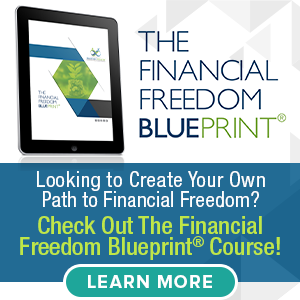How to Become Your Own Financial Advisor
Like it seems for just about every service profession today if you want to go the DIY route and figure it out for yourself, just Google it and you’ll be on your way. I swear I think there is a YouTube video for just about every DIY project you’re attempting to do around the house, with some being easier than others.
While it’s not quite that easy when it comes to managing your finances or becoming your own financial advisor, it can still be done. As long as you have the time and willingness to learn, you certainly can go at it yourself. Many people handle their personal finances themselves and do a great job.
So, that’s what we’re going to explore today. We’ll lay out what you need to do to be a good steward of your personal finances and investments. Like I mentioned prior, if you enjoy this type of stuff and have the time to give to it, then by all means, more power to you. Let’s get started on what you need to do.
Understand your goals and create a savings plan to achieve them
By far the most important step to getting started is to determine what your goals are and what you’re trying to accomplish. Let’s face it, if you don’t know what you’re trying to achieve, how are you going to create a plan to get there?
Once you have your goals in place – and yes, you will add more and take others off over time – it’s time to create a savings plan for each goal. In other words, how much will you need to save weekly, monthly, annually, etc. in order for you to achieve your goal by the date you’ve set?
When you’ve determined how much you need to save, it’s then a matter of taking a look at your cash flow – what’s coming in – to determine if the budget is feasible to save for all of your goals. Remember though, all of the money needed for savings should be treated as fixed expenses just like your utility payments and mortgage. This will ensure you’re always paying yourself first and not trying to save what’s leftover at the end of the month, which is typically zilch for most people.
If the money isn’t in the budget for all of your goals, then it’s time to start prioritizing. Don’t worry if you fall in this boat, the point is that you’ve laid out your goals and a plan is in place.
After you’ve determined the goals most important to you, it’s now time to determine the best investments for your savings goals. A good rule of thumb is any goal within 3-5 years should remain in cash or savings. Granted, you’re not going to make a ton on this money, but this will ensure the money is there when you need it.
As for goals that are 5+ years away, you can start to take some risks within this time frame. How much is really up to you and depends on where your comfort level falls. Another good rule of thumb to follow is that the longer the time frame for the goal, the more risk you can take with your investments.
If you can accomplish what we’ve discussed so far, you’ll be ahead of 90% of the population and well on your way to becoming your own financial advisor. However, I would encourage some further study on investing to ensure you create the proper allocation of investments for each of your goals.
Have a debt repayment plan
You may have already addressed this in the previous goals section, but if not, you need to create some kind of debt repayment plan for any outstanding debts with not so favorable interest rates. I would consider any debt that is 5%+ to be a priority to pay off, not including mortgage.
This could include auto loans, student loans, credit cards, lines of credit, etc. – again, anything 5%+. These types of debts should be considered priorities when it comes to your cash flow. In other words, you should be trying to pay these off as soon as possible. This means you need to set a date of when you want to accomplish this and then determine how much you need to pay weekly, monthly, annually, etc. in order to succeed.
If you have a plan on paper, you’re going to be much more likely to achieve success with your goals. If you’ve just got these goals floating around in your head – like most people – the odds of you actually accomplishing them are greatly reduced. Take the time and write them down!
Understand your risks and create a plan to insure against them
Now that you have your goals on paper, a timeframe to achieve these goals, and an action plan to get there, it’s now time to plan for the “just in case.” We all take risks every single day and if we’re no longer around because one of these risks become a reality, it’s important there is a plan in place to provide for your family.
I get it, if you’re a single person with no debt, then life insurance probably shouldn’t be a priority – but long-term disability insurance definitely still should. However, if you are the breadwinner or the spouse that takes care of the kids, then there’s a good possibility that life insurance is needed. And yes, term insurance should be all you need.
As for how much is needed, it really comes down to your own situation. There are a number of rules of thumb and entire books have been written on this, but this is one of those things you will need to spend a little time on. There is plenty of information and calculators on the internet that can get you pointed in the right direction.
The point is, you need to have an insurance plan in place. Not only does this go for life insurance, but it’s just as important (if not more important) to have long-term disability insurance. I think you’re beginning to see the trend of having a plan and writing it down.
The importance of an estate plan
The final priority I will list today for being your own financial advisor is to have some sort of estate plan in place. This means creating a will (possibly a trust), durable power of attorney, healthcare directive, etc. This is something I highly recommend you not try to do yourself.
Sure, there are websites that make it easy and can save you a lot a money. However, the only way to ensure it’s being done correctly and applies specifically to you and your family is to meet with an attorney and have them draft what is needed.
Most people don’t ever create some kind of estate plan until their 50’s or 60’s. Don’t be like those people! It’s really not that difficult and I can assure you that your family will be grateful in case anything were to ever happen.
So there you have it. A nice blueprint to get you started on being your own financial planner. It definitely can be done, but it’s certainly going to take some time and effort. Good luck and feel free to reach out if I can ever be of help.



